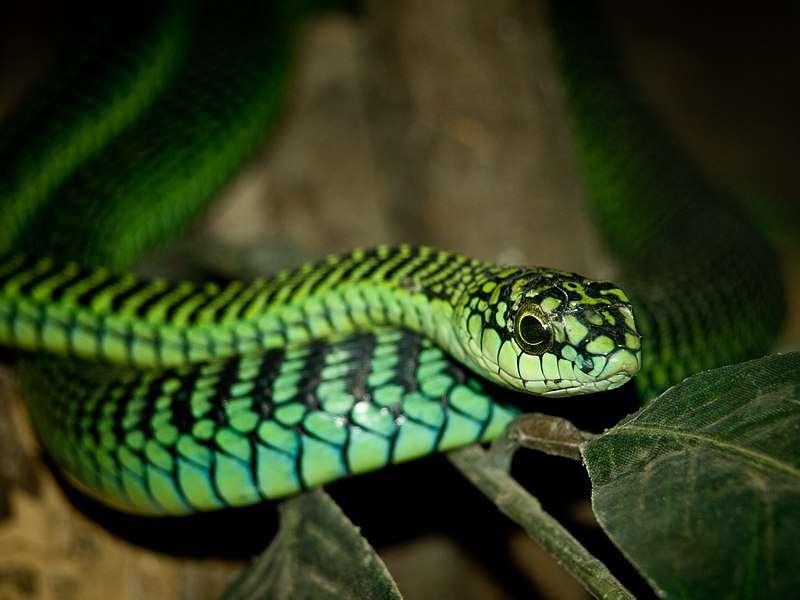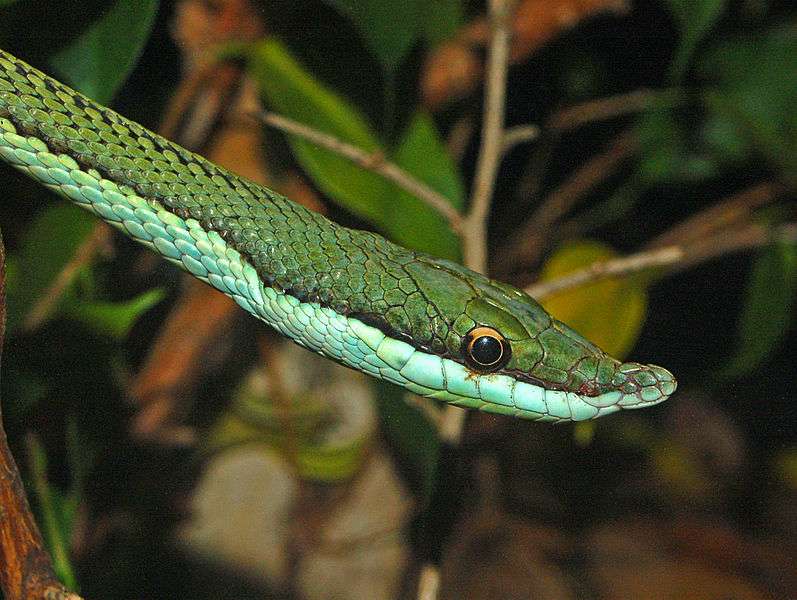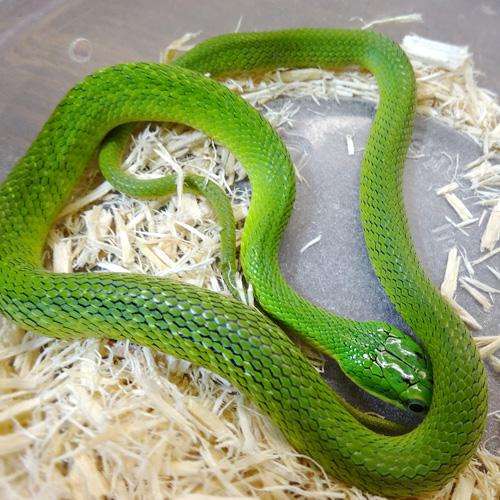
Description:
Scientific name: Dispholidus typus
Life span: 8 years
Coloration varies greatly. Males can be brown as adults, but they have light green bodies with black or blue scale edges. Sexual dimorphism is the term for this. In this species, the canthus rostralis and the head are separate from the neck. The extraordinarily large eye’s pupil is rounded. The boomslang has keen eyesight and frequently turns its head to the side to have a better view of anything in front of it. The subcaudal scales are paired, and the tail is very lengthy.
Native Region/Habitat
Sub-Saharan Africa is home to the boomslang. It can be found in sub-Saharan Africa’s north as well as in South Africa, Eswatini, Mozambique, Botswana, and Namibia. The boomslang lives mostly in forested environments and is a skilled climber. It is a very arboreal species. D. typus inhabits savannahs, lowland woods, grasslands, and karoo bushes. Boomslangs do not only live in trees; they also frequently use the ground for hunting, feeding, and sheltering purposes.

Behavior:
Diurnal and almost entirely arboreal, D. typus. It is solitary and avoids being pursued by anything that is too big to eat by hopping from branch to branch. It consumes entire the eggs of nesting birds and reptiles as well as chameleons and other arboreal lizards, frogs, small mammals, and rarely birds. Boomslang snakes will also consume other snakes, even fellow boomslang snakes. Boomslangs brumate for brief times when the weather is chilly, frequently curling up inside a weaverbird’s protected nest.
Care As a pet/In captivity:
Enclosure:
A 6 12 foot tall, 5-foot wide, and 5 foot long reptile terrarium or vivarium is required for boomslang snakes. Boomslangs are climbing arboreal snakes that spend the most of their time in shrubs and trees. The enclosure for the boomslang should always be locked to prevent the snake from escaping. Use a trap box as a temporary home if the snake needs to be moved at any point. Place the enclosure of the boomslang away from doorways and busy areas to protect the snake’s privacy.
Temperature and Humidity: For snake care, proper heating and lighting are essential. The boomslang snake requires a warm climate with daytime temperatures of 75–85°F and nocturnal temperatures of 65–68°F.
Keep the boomslang snake’s captive environment dry and comparable to its native environment by balancing daytime and evening temperatures and spraying the enclosure occasionally.
Food and Water: Boomslang snakes consume a wide range of creatures, such as lizards, frogs, eggs, birds, and small mammals. Boomslangs consume its victims whole, as well as other snakes and occasionally one another. Feed the adult boomslang every week or, when it’s young, every few days. Smaller reptiles are consumed by juvenile boomslang snakes than by adults.
Boomslangs mostly hunt from trees, although they occasionally hunt on the ground as well. They can consume a wide range of prey. Water should be left in a basin in the boomslang snake’s enclosure so that it can drink from it. Although it shouldn’t be used in place of the water bowl, a water mister can be used to mist the surrounding vegetation so that the snake can drink water that way.
Table





